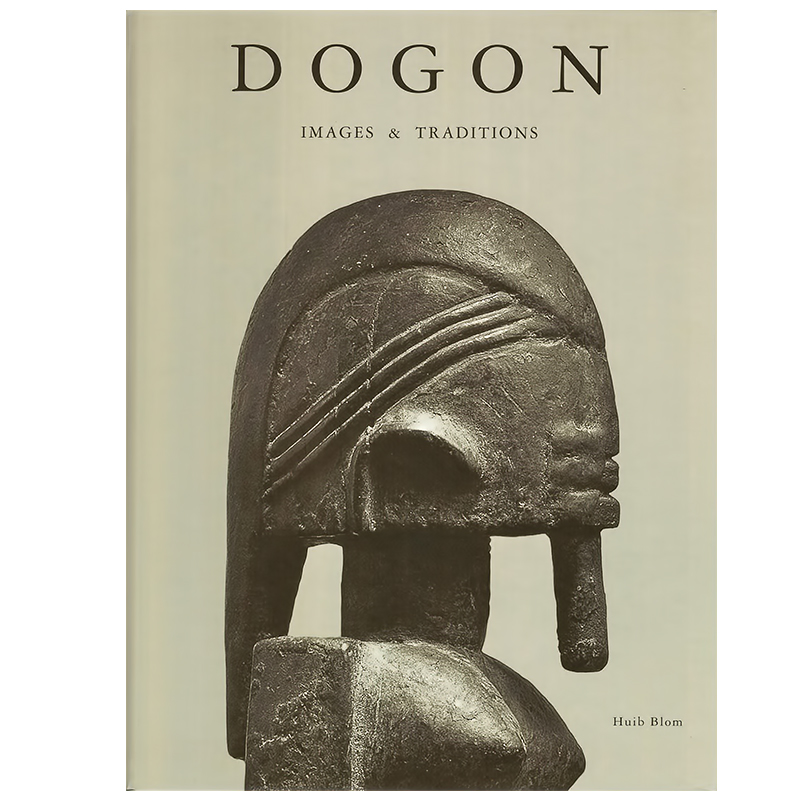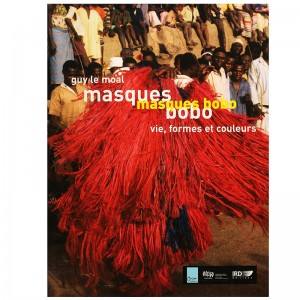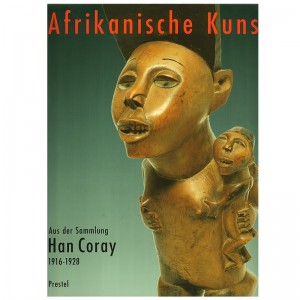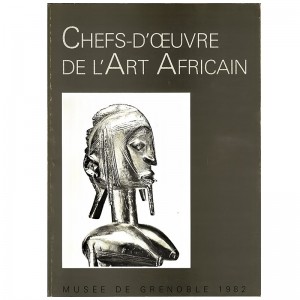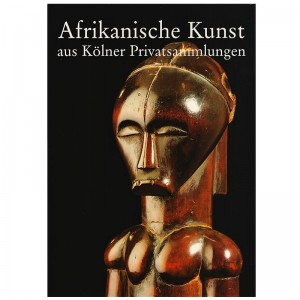DOGON
Subtitle: Images & Traditions
Author: BLOM H.
Material Type: general or thematic Work
Publisher: Momentum Publishing, Brussels, 2010. Bound with editor binding illustrated in color Very good condition as new, in-4, size: 22 x 28.5 cm, ISBN 978-2-8399-0725-5
Content: 400 p, Library, 2 maps, 240 photographs in full and double page with 72 photos of sculptures and masks, glossary
Additional information: French & English Bilingual 80 pages of text
State of the work: Very good condition like new
Description
The book consists of five chapters, the first of them, the “Dogon” of ancient times, presents the history and archeology of a territory composed of three distinct regions (plateau escarpment plain) and arranged by “successive waves of migrants” (p.18). Once again, Huib Blom points out that “the idea of a homogeneous and sealed Dogon Culture is false. It comes as external cultural contributions as a native substrate “(P.18). Two of the first cultural sources are identified, discussed and portrayed as Toloy and Tellem. After clarification of analysis, Bloom concluded that “the current occupants of the cliff of the plateau, and the plain of Seno form a heterogeneous population … Migration and territorial conquests cover several centuries and do not concern only the Dogon. The meeting between the invaders and the indigenous communities provoked a cultural and ethnic mix, the extent is difficult to assess “(P.38).
The second and largest part of the book is titled as just “A Large Territory” with more than 150 pages that illustrate literally different regions and peoples of the region of Dogon culture area. Each zone is represented in its history, art, architecture, language and demographics Pignari and Bandiagara through the Lowel Gueou and multiple colonies Toro to Seno plain. Chapter summarizes the details overwhelming in its finality when Blom assesses that centuries of raids, wars and movements, involving groups such as the Songhai, Mossi, Bamana and Fulani led to the merger or moving companies: “This process of territorial dismantling, dislocation and reconstruction of many villages has been repeated many times. It was a recurring situation that ended in the 19th century with the French colonization “(p.207).
Chapter three, Architecture and Religion, provides nearly 80 pages of words and images organized around four major sectarian functions and their sacred places, including the cult of Lebe and his house Hogon or wise worship Wagem and his house patrilineal patriarch, the shamanic cult of Binu, and the Society of Masks (discussed in more detail in chapter Five). It also includes other important sites such as the mosque, the box of menstruation and the forge, where a group as a caste of craftsmen (also made famous by Griaule) doing their job. Finally, names and describes a variety of Dogon altars.
The fourth relatively short chapter focuses on the funeral sites and practices, which tend to be conducted during the dry season when there is a lull in farming. Blom details the funeral of a Hogon in 1985 and also adds some comments about women funeral.
The last chapter deals masks, for which the Dogon are perhaps best known traditions linking the mask to regional mythology and common distinction between the village and the bush (the latter being a place of ambivalence and danger invisible), Blom has some of the materials used in the creation of masks and guides the reader through a presentation on the types and uses of masks, the great Mask also called “The Mother of the Masks” (a tall sculpture), the Satimbe the Mamoro and Sirige the most recognizable of all the Kanaga style as well as a few others.
En Résumé, ce volume colossal combine des descriptions détaillées de la terre, l’histoire, les gens, les arts et les rituels de pays Dogon, mettant l’accent sur la diversité et la complexité de cette région, et, par extension, de toutes les sociétés africaines et non-occidentaux. Les sculptures et les masques proviennent de collections publiques et privées. Certaines pièces sont connues mais la plupart n’ont jamais, ou que rarement, été publiées. Le texte s’inspire des nombreuses études ethnographiques qui ont été menées sur place.
Additional information
| Weight | 2370 g |
|---|---|
| Dimensions | 22 × 28.5 cm |
Related Products
-
MASQUES BOBO
49,00 €Subtitle: Life, shapes and colors Author: G. Le Moal Material Type: general or thematic Work Publisher: Biro editor, Paris, 2008. Hardcover cardboard editor shown in color, in-4, size: 23.5 x 28.5 cm, ISBN 978-2-35119-050-0 Content: 128 p, 17 drawings, 1 shots, 2 cards, library, numerous photographs b / w and color, filmography.. State of the…
-
AFRIKANISCHE KUNST
60,00 €Subtitle: Aus der Sammlung Han Coray 1916-1928 Authors: M. von Szalay / BASELITZ G. / BREITWIESER I. Material Type: Exhibition Catalogue. Völkerkundemuseum der Universität Zürich: 2. Dezember 1995 -2. Juni 1996. Staatliche Kunsthalle, Baden-Baden: 22. Juni - 1. September 1996 Publisher: Prestel-Verlag, München, 1995. Paperback, 4to, size: 24 x 30 cm, ISBN 3-7913-1493-9 Content: 260…
-
CHEFS-D’ŒUVRE DE L’ART AFRICAIN
100,00 €Authors: F. STOULIG MARIN / KERCHACHE J. / GAUDIBERT P. Material Type: Exhibition Catalogue. Musee Grenoble: November 4 to December 31, 1982 Publisher: Musée de Grenoble, Grenoble, 1982. Paperback, dimensions: 21 x 29 cm Content: 94 percent, 34 ill.. b / w, 1 cards, biblio. State of the work: Very good condition
-
AFRIKANISCHE KUNST
50,00 €Subtitle: aus Kölner Privatsammlungen Authors: W. Schmalenbach / KORINTHENBERG G. Material Type: Exhibition Catalogue. 35th Art Fair in West Germany, Cologne: 2004 Publisher: Koelnmesse GmbH, Cologne, 2004. Bound with black draped editor binding with title in white engraved recessed under jacket illustrated color new, in-4, size: 21.5 x 30.5 cm, ISBN 3-00-013510 -3 Content: 96…
85,00 €
1 in stock



